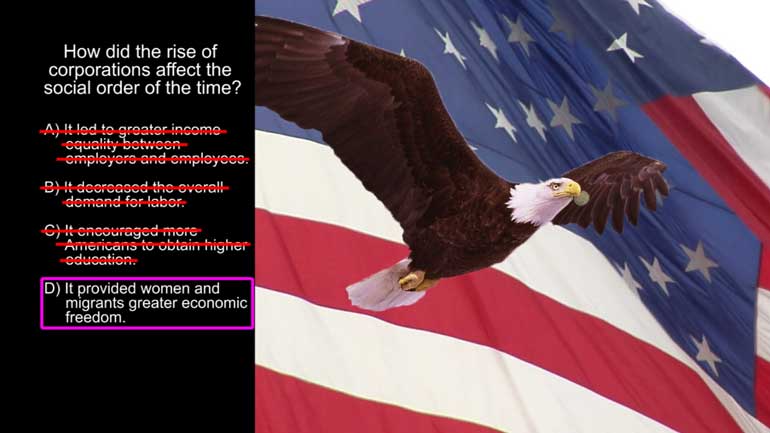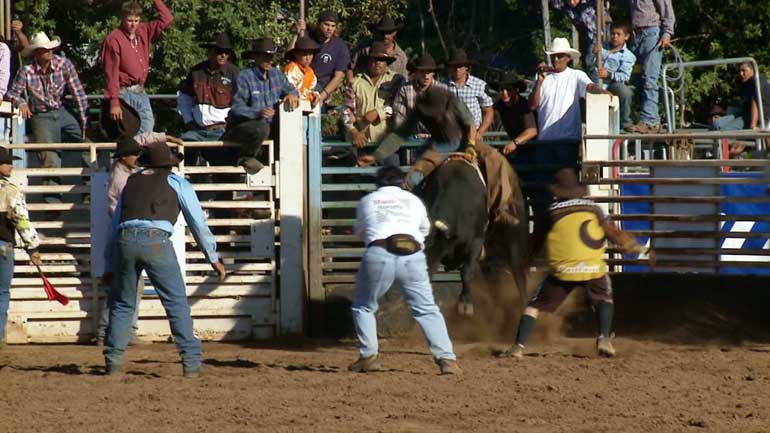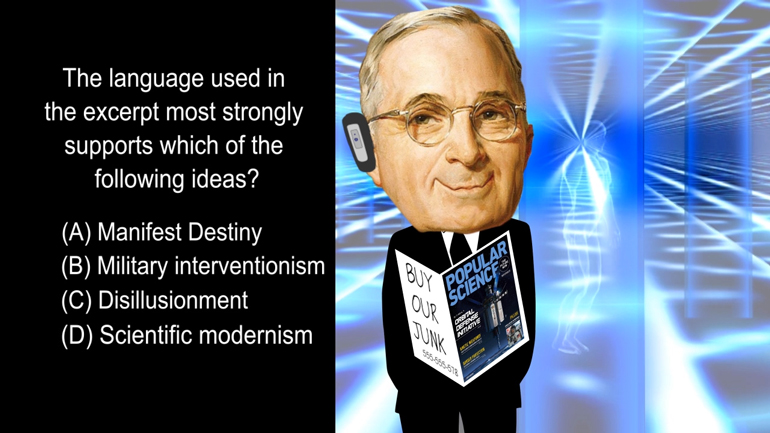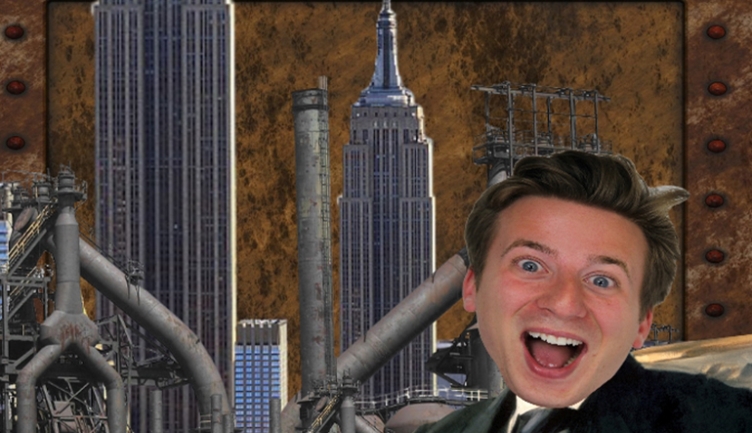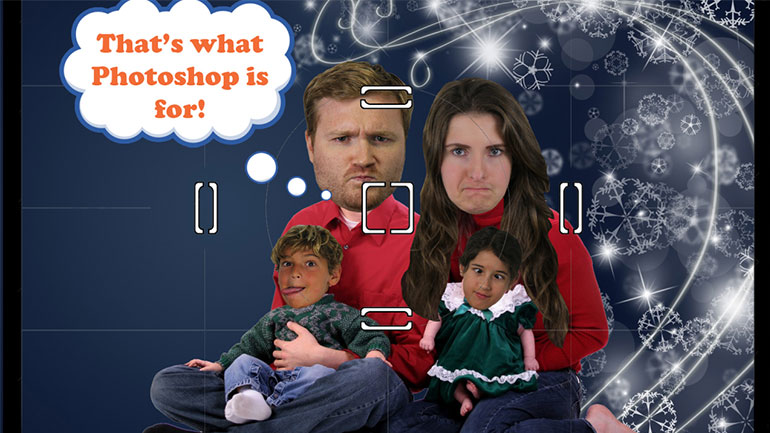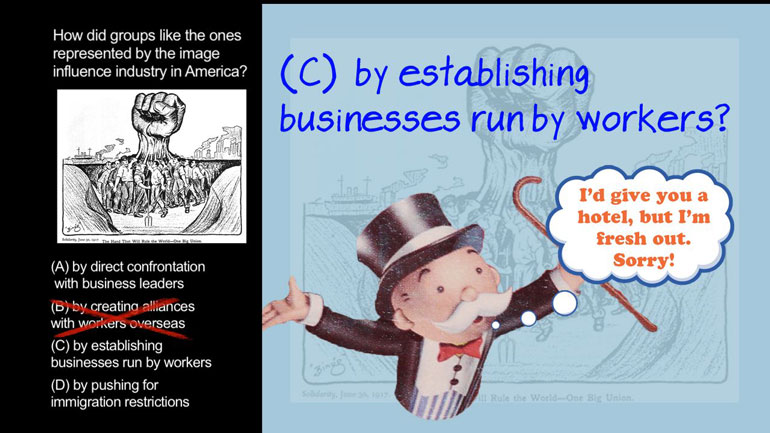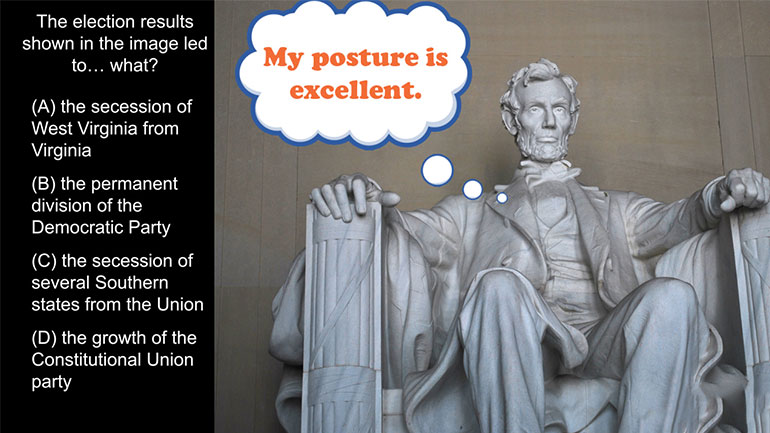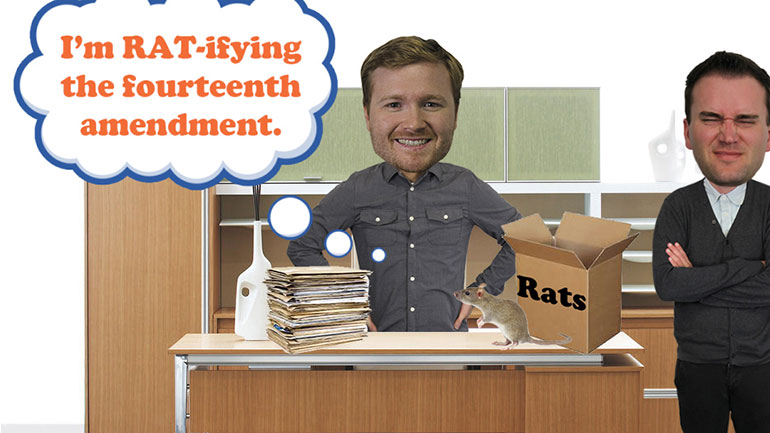ShmoopTube
Where Monty Python meets your 10th grade teacher.
Search Thousands of Shmoop Videos
Playlist U.S. History: 1890 – 1945 10 videos
AP U.S. History 1.1 Period 7: 1890–1945. The Clayton Antitrust Act marked a new period in American labor relations because it...what?
AP U.S. History 1.2 Period 7: 1890-1945. Antitrust laws like the Clayton Act were a direct response to what development in the United States economy?
AP U.S. History 1.3 Period 7: 1890-1945. How did the rise of the corporations affect the social order of the time?
AP U.S. History 2.5 Period 7: 1890-1945 243 Views
Share It!
Description:
AP U.S. History 2.5 Period 7: 1890-1945. The "capacity of industry" that President Truman refers to coincided with and was enabled by what demographic shift?
- History / Early 20th Century
- World History / Culture
- Science, Technology, and Society / Economic Development
- Science, Technology, and Society / Space Technology and Exploration
- Science, Technology, and Society / Free Enterprise System and Technological Innovation
- Transformation of the Nation During WWII / Wartime Experiences of Women and Minorities
Transcript
- 00:00
[ musical flourish ]
- 00:02
And here's your Shmoop du jour, brought to you by a demographic shift,
- 00:06
the button on your keyboard that really shakes things up.
- 00:09
Yeah, like that. All right.
- 00:11
Well, take a look at this excerpt.
Full Transcript
- 00:12
[ mumbles ]
- 00:17
[ mumbling continues ]
- 00:22
And the question:
- 00:24
The "capacity of industry" that President Truman refers to
- 00:27
coincided with and was enabled by
- 00:30
what demographic shift?
- 00:32
And here are your potential answers.
- 00:34
[ mumbles ]
- 00:38
All right, well, first up. What exactly does
- 00:40
"capacity of industry" mean?
- 00:44
Well the excerpt says
- 00:45
"and hardly less marvelous has been the capacity of industry
- 00:48
to design and of labor to operate."
- 00:50
So Truman is talking about some increase
- 00:52
or expansion that allowed big business to grow,
- 00:56
well, bigger.
- 00:57
Have you ever seen The Biggest Loser? Yeah, like that.
- 00:59
We also know that this expansion was a result of
- 01:01
a demographic shift, which basically means
- 01:04
a change in the make-up of the population.
- 01:06
No, not switching from L'Oreal to Clinique.
- 01:08
Although, that's a move that's pulled religious debate.
- 01:11
We won't get into it. The other kind of make-up.
- 01:14
Like an increase in young people or a specific
- 01:16
ethnic group.
- 01:18
So let's see which answer can clue us in to what was going on back then.
- 01:21
Was the capacity of industry enabled by the demographic shift
- 01:24
of A - growth in the rural population
- 01:28
to meet agricultural demand?
- 01:30
Hmm. Well, actually, with most jobs now in the cities,
- 01:33
the U.S. as a whole shifted toward urbanization,
- 01:36
like factories and stuff like that. So country life -
- 01:39
farming - was headed out to pasture.
- 01:41
That knocks out A.
- 01:43
Could this boom in business have happened because of B -
- 01:45
emigration from the United States to find jobs?
- 01:49
Hmm. "Emigration" with an "E" means
- 01:52
that you're leaving the country.
- 01:54
And this period featured an increase in
- 01:56
"immigration" with an "I," especially in the wake of World War II.
- 01:59
So, guess that I before E rule applies here, as well. Hehe.
- 02:03
Cross out B.
- 02:05
Did the increase in production coincide with C -
- 02:07
a "baby boom" that swelled overall population?
- 02:11
Like everyone was having 3.4 kids,
- 02:13
instead of the 1.5 we do today.
- 02:15
Truman made this speech the day we dropped the bomb,
- 02:17
so many of the nation's men were still overseas.
- 02:20
When they came back, though, you better believe they saw
- 02:22
a whole different kind of action. [ clicks tongue ]
- 02:25
Giggity. So it's not C, either.
- 02:27
Which means that the capacity of industry
- 02:29
coincided with and was enabled by D -
- 02:32
a massive wave of African American migration out of the South.
- 02:37
That is, in the pre-World War II South,
- 02:40
African Americans faced intense discrimination
- 02:43
when seeking employment. Remember Jim Crow laws
- 02:46
and sharecropping and all that? Stayed with 'em.
- 02:48
But when the U.S. went to war, the economy picked up steam
- 02:51
and jobs became available across the whole country.
- 02:54
So five million African Americans migrated North
- 02:57
and West for jobs,
- 02:58
referred to as the Second Great Migration.
- 03:01
And by the end of the war, 80 percent of African Americans
- 03:04
lived in cities, a great proportion than
- 03:06
any other ethnic group. So D is the correct answer.
- 03:09
The city might've been less picturesque
- 03:11
than the countryside, but it was definitely a better change of scenery for, uh,
- 03:15
everyone involved.
- 03:16
[ boing ]
Related Videos
AP U.S. History Diagnostic 1. Relationships like the one shown in the image resulted in the development of...what?
AP U.S. History Diagnostic 15. How did groups like the ones represented by the image influence industry in America?
AP U.S. History Diagnostic 10. What led to the splintering of the political parties shown in the image?
AP U.S. History Diagnostic 11. The election results shown in the image led to...what?
AP U.S. History Diagnostic 12. How did the Reconstruction Acts open up political opportunities for former slaves?


